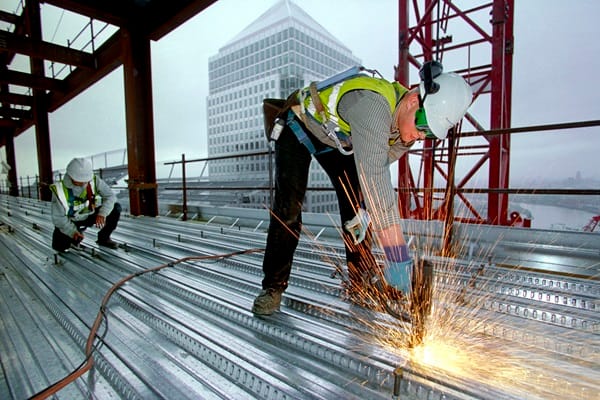Precise finishing of metal components is indispensable in modern production technology. Deburring in particular is a decisive process step to ensure both functionality and safety. Innovative high-quality deburring metal solutions are becoming increasingly important as they are not only more efficient, but also offer more sustainable alternatives to conventional processes. The challenge is to choose a process that meets the specific requirements of the respective workpiece.
The most important thing at a glance:
- Deburring is an essential step towards ensuring functionality and security
- Different deburring technologies offer different advantages and disadvantages
- Innovative plasma processes revolutionize metal reprocessing
- Sustainability and efficiency are increasingly becoming important factors in technology selection
Why deburring is indispensable in metalworking
When forming metal components, small protruding metal residues are often produced at the production edges – so-called ridges. These burrs can be sharp-edged and represent a significant risk of injury for machine operators and users. In addition, they can affect assembly processes and come loose during operation, which can lead to increased wear and tear or even serious damage to health.
In the automotive industry, precise deburring is particularly important, especially in fluid carriers and body parts made of steel and aluminium alloys. In medical technology, on the other hand, a reliable deburring process is not only crucial for the safety of the application, but also for the successful assembly of the components.
The importance of deburring is recognised across industries – from mechanical engineering to tool manufacturing and aerospace technology. It is not a question of aesthetic or technical differentiation, but a fundamental requirement for safe and functional components.
Traditional deburring processes and their limits
The world of deburring technologies for metals is extremely diverse. From proven to highly innovative processes, various processes are available, each with specific strengths and limits.
Manual deburring
Manual deburring is done with tools such as files, sandpaper or hand tools. This process offers high flexibility and the possibility to precisely process individual parts. However, it is time-consuming, labor-intensive and strongly dependent on the manual capabilities of the operator. The consistency of the results may therefore vary. In times of increasing skills shortage and increasing quality requirements, pressure to automate is increasing.
Mechanical deburring
Mechanical deburring uses milling or brushing tools to remove burrs from the workpiece and rounding edges. This method is ideal for series production and large components. The strength lies in the high precision, speed and repeatability, which makes it particularly indispensable for fast-tactical processes in the automotive industry. However, access to these tools is limited in complex geometries, which makes deburring difficult or impossible.
Thermal and chemical processes
During thermal deburring, burrs are burned or evaporated by a thermal-chemical reaction in a closed chamber. Chemical deburring, however, uses chemical solutions that specifically dissolve the material. Both methods have specific areas of application, but also have disadvantages – whether through undesirable material changes or environmental and health risks.
Despite the variety of traditional methods, challenges remain: either the processes are too time-consuming, too inflexible for complex geometries, or they do not meet the increasingly stringent environmental and sustainability requirements of modern production.
Innovative plasma processes as a future of deburring
In response to the limits of conventional technologies, innovative approaches such as plasma deburring are developing. By combining electrochemical and plasma physics processes, it offers a highly efficient alternative to mechanical or chemical technologies. Interesting developments in this field can be found at plasmotion.com, where comprehensive solutions for this forward-looking technology are presented.
During plasma deburring, the workpiece is immersed in special electrolytes. When a DC voltage is applied, a contour-like steam film forms on the surface. This leads to the unique plasma-electrolytic removal of burrs and micro-roughnesses while carrying component cleaning. The JET plasma deburring is particularly innovative, in which the plasma-electrolytic removal takes place in a single beam and can therefore be applied to the surface precisely.
The advantages of plasma deburring are obvious: burrs can be removed within a few seconds and rounded edges – without significant thermal or mechanical influences on the material.
Sustainability aspects of modern deburring methods
A significant advantage of innovative plasma processes is their environmental compatibility. Unlike many chemical processes that work with hazardous acids, modern plasma deburring technologies use special electrolyte solutions based on aqueous salt solutions, which are classified as harmless according to REACH. This not only reduces the environmental impact, but also the costs for handling and disposal of chemical residues.
These new technologies combine different process steps in a single process. While conventional methods often need to be cleaned and degreased beforehand, the plasma process combines these steps with polishing in a single process. This saves time, space and reduces the number of interfaces in the production chain.
Applications and industry solutions
The demands on deburring technologies vary greatly depending on the industry and the application. In medical technology, for example, the focus is on absolute reliability, while the automotive industry is often decisive in terms of large quantities.
Medical technology
Classic stainless steels such as 1.4404 (316L) and 1.4542 (17-4PH) are often processed in medical technology. After milling and laser cutting, these components have microgrates, which not only have to be reliably removed, but often also equipped with rounded edges. This edge rounding facilitates assembly processes or prevents threads from breaking. Innovative plasma processes offer a precise and reproducible solution.
Mechanical engineering
In mechanical engineering, deburring metal components and parts ensures functionality during assembly and operation. Reliable removal also extends the service life of machines. A reliable deburring process is essential, especially for hydraulic components or precise guide elements.
Aerospace technology
Deburring ensures the smooth functioning of metallic components in aircraft and spacecraft in aerospace technology. In addition to technical functionality, compliance with the strictest safety standards is also of decisive importance. The challenge is to precisely process complex geometries without affecting the material properties.
Decision criteria for the selection of the optimal deburring procedure
The right deburring process should always be selected based on specific criteria that are tailored to the individual requirements of the respective production process.
| Criterion | Importance for the procedural choice |
|---|---|
| Material type | Different materials require specific deburring methods |
| Component geometry | Complex shapes require flexible processes with good accessibility |
| Gratbed | The size and strength of the burrs influence the choice of methods |
| Series sizes | High quantities require automated, fast processes |
| Surface requirements | Additional requirements such as gloss or defined edge rounding |
| Sustainability | Environmental compatibility and resource efficiency of the process |
When making decisions, it is advisable to test and evaluate various procedures based on sample parts. Investment costs should always be considered in relation to the overall efficiency of the process and the achievable quality.
Future prospects in deburring technology
Deburring technology is continuously developing, driven by the growing demands on precision, efficiency and sustainability. A clear trend is the increasing automation and digital integration of deburring processes into the entire production chain.
Innovative processes such as plasma deburring already show how traditional boundaries can be overcome. In the future, we will probably see an even greater individualization of processes that are precisely tailored to specific materials and geometries.
The integration of sensors and artificial intelligence will make it possible to monitor and adapt deburring processes in real time, which will lead to a further increase in quality and efficiency. At the same time, environmental aspects and resource efficiency will continue to become more important and promote the development of new, even more sustainable processes.
Metal processing companies that today invest in innovative deburring technologies not only create short-term competitive advantages, but also position themselves in the long term for the requirements of the future. The precise finishing of metal components remains a decisive factor for quality, safety and functionality – and thus a central aspect in modern production technology.






Leave a Comment